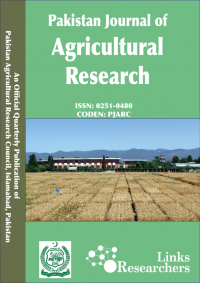Muhammad Afzal, Sarfraz Ahmad , Abdul Salam Baloch* and Qazi Bashir Ahmad**
ABSTRACT
Hedonic price model was used to examine factors affecting livestock price formation while price variations due to time were examined using means and coefficients of variation. A sample of price observations of 725 animals (389 sheep and 336 goats) from Quetta livestock market was collected for one year on quarterly basis with a minimum sample of 150 animals. The objective was to determine seasonal price variation considering the effects of different attributes of the animals namely, live weight, age, gender, body score and time of sale of animals. The results indicated that there were significant differences in prices among seasons. The seasons considered in the study were Eid-ul-Azha, Ramadan, and severe feed shortage period. The prices were the highest at Eid-ul - zha followed by Ramadan and feed shortage (winter) season. The explanatory power of the model was considered adequate as the factors included in the model accounted for 76% of the price variation at Quetta market. Producers should consider major marketing demand events like Eid-ul-Azha, Ramadan, etc. as the exceptional occasion to put up their animals for sale. The price per kg on live weight was higher by 39% and 24% in Eid-ul-Azha and Ramadan seasons, respectively as compared to normal season. Live weight has considered a very important variable in determining the price of an animal. Installation of separate weighing machine for small and large animals should be placed at the entry point of Quetta market. This will help farmers to know the exact weight of animal and brings them at par with other market agents in price bargaining. So, the good quality animals will bring more if they are sold by grade and weight.
To share on other social networks, click on any share button. What are these?






